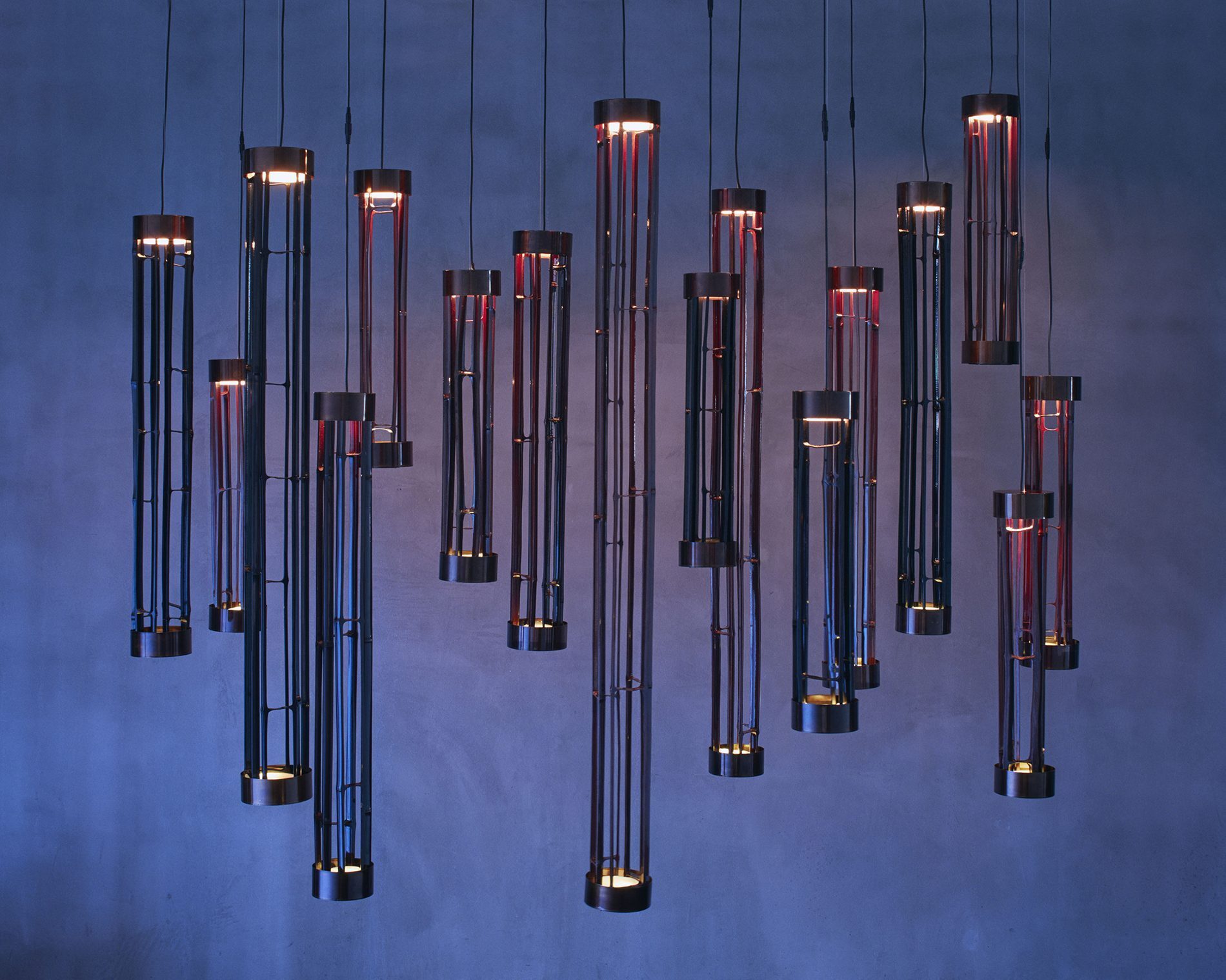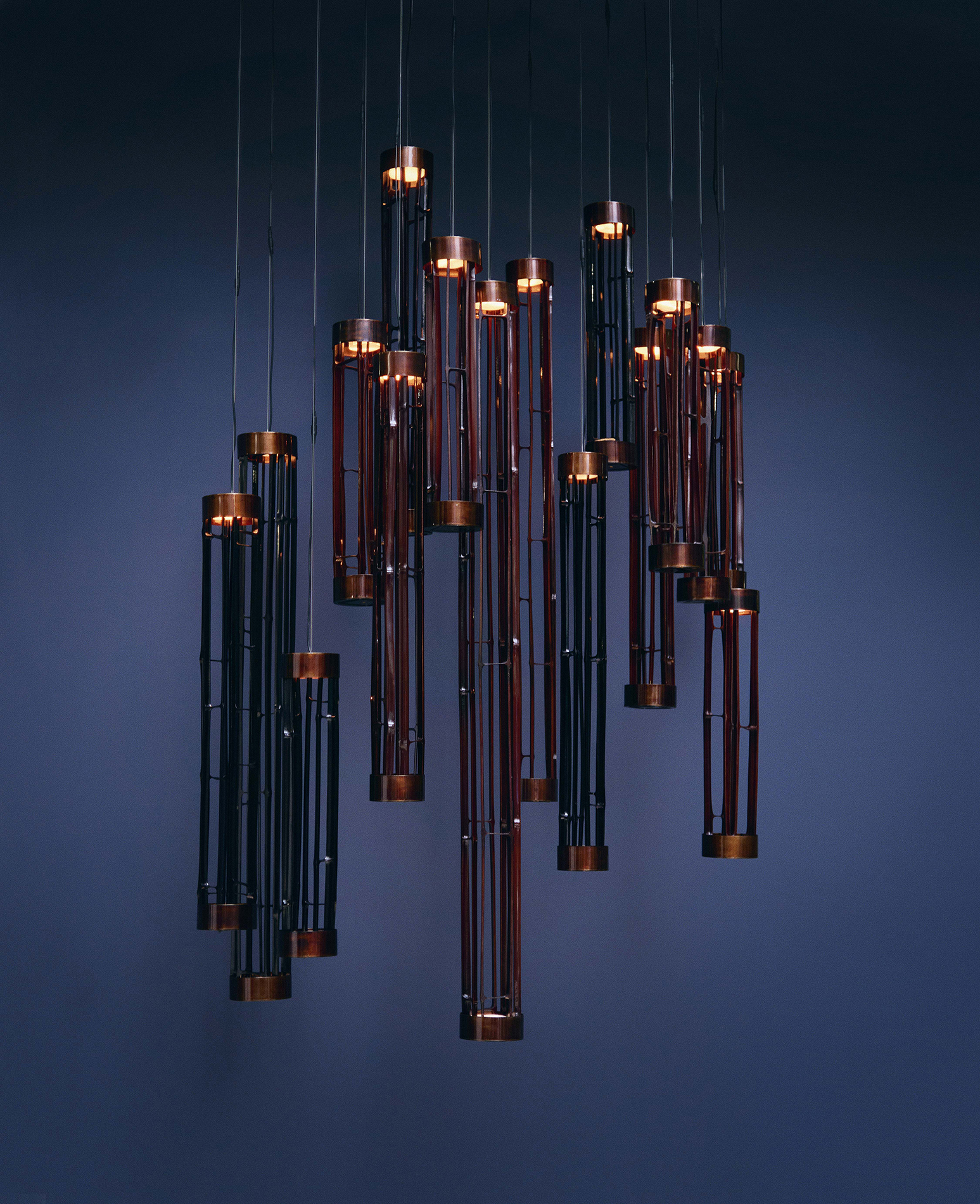Radiance of Nature with Urushi
Category: Furniture
【Short project description】 Urushi lacquer is produced from natural sap sustainably harvested in Japan. Unfortunately, the traditional craft of Urushi is in decline due to the emergence of alternative materials. This project aims to revitalise this craft and create a space that connects us with nature. Unlike the West, where people remove shadows from their space, the Japanese embrace shadows aesthetically as a part of beauty. Urushi has qualities that reflect even the smallest light. Through the arrangement of tree-like shapes, the play of light and shadows can immerse us in a microcosmic space reminiscent of nature. 【Key project details】 What is Urushi? Urushi is a natural lacquer material harvested from the Japanese Urushi trees grown in East Asia. It is made by refining the sap and is very strong and resistant to water and heat and has a unique gloss and sheen. It is also biodegradable as it decomposes under UV light, thus it is a truly sustainable material. Japanese goods made using Urushi lacquer are one of Japan's most famous traditional crafts. Characteristics of Layers The essence of Urushi is its diverse versitility of expression, which are based on the application of layers. These smooth, beautiful, shiny surface can be handcrafted through multilayering and polishing by experienced artisans. Made by highly skilled craftsmen, Urushi crafts have fascinated people since they were used for furnishings and luxury items for people of noble status and for buildings such as their own temples and shrines. Crisis of Urushi crafts Urushi has a long history in Japan, having been used for 9000 years. However, with the emergence of plastic products and changing lifestyles, sales of traditional Japanese crafts have been declining. Compared to the peak production value of 278.4 billion yen in 1998, this figure has fallen to 87 billion yen in 2020. As a result, Urushi production areas are shrinking, and in the Tamba region of Kyoto, there are now only two Urushi harvesters, compared to over 200 in the past. The number of Urushi craftspeople is also decreasing and the culture is in danger of disappearing. This shows that there is an urgent need to preserve these craft skills and culture for future generations. 【Innovating Tradition】 Transforming Traditional Values It is important to appropriately transform traditional techniques and ideas into the modern era, as this leads to innovation. Recently, there has been an increasing trend of modernizing only the colours and shapes of craft designs, such as applying Ursuhi to home kitchenware. However, it is necessary to understand the true value of craftsmanship and the cultural background in which it was nurtured, and to convey its true spirit properly. In Praise of Shadows In "In Praise of Shadows" by Junichiro Tanizaki, the author describes the true value of Urushi as emitting a depth of shine that reflects a candle-like glow in a dark room, inviting people into a meditative space. While Western people tried to remove shadows from their space, Japanese people considered the darkness as a part of beauty. Mitate In Japanese culture, the method known as "Mitate" can be seen in cultural expressions. For example, in a Zen rock garden, stones are used to represent a sea of clouds or the ocean. This technique relies on alternative materials instead of actual water, leaving the viewer's imagination and enjoyment up to their own interpretation. In other words, it is a system that invites individuals into their own microcosmic or meditative space. The Past into the Future By looking at the core of Japanese culture, we can find an appreciation and connection to nature. However, in our modern lives, we have forgotten how to enjoy this culture, view the world, and connect with nature. Creating meditative spaces using the concepts of light and Mitate can provide modern people with a good opportunity for self-reflection. By appropriately transforming the core materials and culture for the modern era, the assets of the past can become innovations for the future. 【Circular Design】 Celebrating slow-paced work Why can‘t everyday objects also be an opportunity for people to connect with nature? Urushi, a fully repairable, biodegradable, and naturally produced lacquer, allows us to create products embodying the cycle of nature. This ancient Japanese craft founded in principles of sustainability is revitalized through a modern design in this project. Urushi is extracted from trees in small amounts, processed and applied to natural materials such as bamboo. Although highly durable, Urushi products can be returned to nature when disposed of breaking down naturally under UV light. Crafted by hand by skilled artisans, each product is created in respect of the slow, yet continuous production of natural material. This circular design has a wide range of applications and the potential to restore the relationship between nature and people contrasting the modern reliance on single-use plastics. Public Installations This project can be enjoyed in spaces where you may want to get away from the usual busy world, calm your mind and concentrate on your own senses. Although it is a light, it should not always be used intermittently every day from morning to night but should be a device that is used when one seeks the calmness and balance of nature. It may suit a particularly stressful environment; in an office, a hospital or a hotel lounge where visitors require a moment to pause. By offering a unique experience to people through installing in the public space, it also attracts new interest in traditional Japanese crafts and materials. This product can generate demand for the craft community to preserve the ancient culture and techniques with endless potential in future innovations and applications.



 Copy URL
Copy URL
 Login to Like
Login to Like 